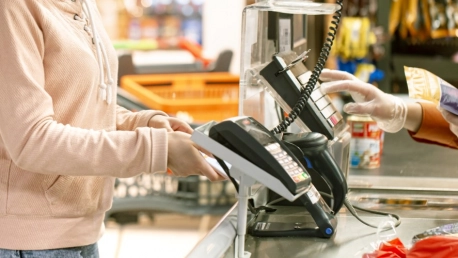The global economy is struggling to adapt to yet another crisis, after Russia decided to invade their neighboring country, Ukraine. According to the United Nations, almost 3.5 million people have already left the country now invaded by Russian forces, and 6.5 million people have been displaced inside the borders of Ukraine. As countless lives have also been lost in the conflict, the U.S. and other Western allies have imposed numerous economic sanctions on Russia in an effort to stop the invasion—targeting members of the Kremlin regime and Russian companies that fuel the country’s economy.
According to the Treasury, the U.S. took unprecedented action in its response to Russia’s continued invasion of Ukraine by imposing serious economic costs that will cause both immediate as well as long-term effects on the Russian economy. However, imposing expansive economic measures in a joint effort with other countries around the world also means furthering risks that may affect the global economy—an economy already struggling to recover after the COVID-19 pandemic. Although Russia’s economy will undoubtedly suffer as a consequence, other economies could also be hit by the aftershocks. In fact, industries like retail in the U.S. and abroad are already bracing for how the war in Ukraine will worsen supply shortages and disrupt sales.
Retail sales slowing
Reuters reports that U.S. retail sales have only increased moderately in February as rising gas and food prices forced numerous people to cut expenses like furniture, electronics and appliances. However, decreased sales for these items could also curb economic growth this quarter. According to the new report issued by the Commerce Department, however, the rebound in sales in January was much stronger than initially estimated. Another important aspect of the matter is the fact that high prices for gas and food are most likely to affect lower-income households the most, increasing and broadening economic inequality in the near future.
While retail sales have increased 0.3 percent in February, after a revised 4.9 percent rise from December to January, new worries could make gas and food prices increase even more in the following months, especially given the Russian invasion of Ukraine. More than 400 companies have already withdrawn from Russia after the invasion, but while the decision is popular among customers and with the general audience, it will probably not go without economic repercussions. With reports about limited supplies of wheat, vegetable oils, metals and chips adding to the list of worries, prices are now expected to rise even more.
Disrupting economic recovery
Rising prices are indeed important when talking about economic recovery in general, and particularly about inflation. However, the good news is that the Federal Reserve has already raised interest rates by a quarter percentage point, in a new effort to fight inflation. Surging inflation is already plaguing the global economy, and America is no exception. Adding issues like the crisis in Ukraine, tightening of monetary policy and less fiscal stimulus within the U.S., it comes as no surprise that retail sales are slowing. Even so, according to a Deloitte forecast, economic growth will probably continue in 2022 as the influence of the COVID-19 pandemic wanes.
Deloitte experts also warn that some slowing may also occur in 2022 as the economy will reach full employment, monetary policy will become inflexible, and the conflict in Ukraine will lead to surges in energy prices. U.S. retailers know they are not immune to these new challenges, and they are already trying to assess future demand during these unpredictable times. However, not only is keeping shelves stocked proving to be a difficult task, but some U.S. retailers have already expressed their concern that the confusion created by Russia’s invasion of Ukraine could impact sales in the first quarter and beyond.
Withstanding a new crisis
Concerns regarding this new crisis are certainly justified, especially if we consider the fact that the price of oil is likely to remain higher than usual, as Russia alone produces approximately 12% of global crude oil available. High oil prices will undoubtedly disrupt most industries, and U.S. companies are likely to struggle with even more new issues as a consequence. Even so, U.S. retailers have survived the COVID-19 pandemic and even went on to recover as sales rose. This goes to show that not only is the industry less fragile than expected, but American consumers could prove to be one of the greatest assets of the U.S. economy.









